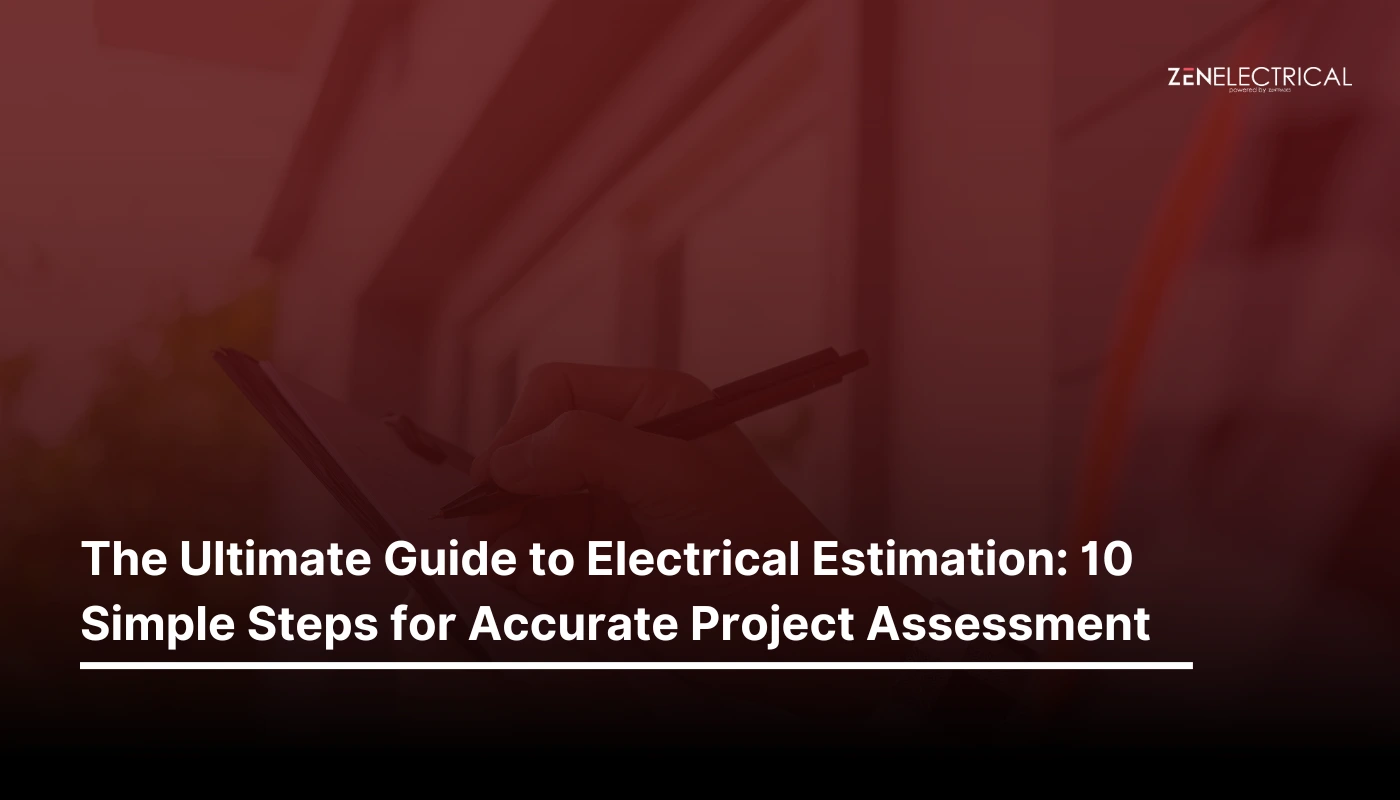The Ultimate Guide to Electrical Estimation: 10 Simple Steps for Accurate Project Assessment
- Field Service Management
- 9 Min Read
Field service contractors operate in dynamic environments, constantly facing variables that impact the accuracy of their estimates. These complexities arise from several factors. First, field service work often involves on-site evaluations, where unforeseen issues or hidden challenges may arise, requiring adjustments to the initial estimates.
Additionally, contractors must factor in travel time, equipment availability, and resource allocation, all of which can vary depending on the location and nature of the project. Furthermore, fluctuations in material costs, labor rates, and regulatory requirements further complicate the estimation process. Effectively navigating these complexities demands experience, industry knowledge, and a flexible approach to ensure accurate estimates that balance client expectations with profitability
Since it guarantees both financial success and client pleasure, effectively estimating electrical work is a key ability for electricians. We have developed a thorough 10-step tutorial to assist you in overcoming the challenging issue of electrical estimation.
Here What We Cover
How to Estimate Electrical Work with Ease in 10 Steps
Step 1: Examine the requirements for electrical jobs
Start by carefully going over the client-provided electrical job specs. This involves being aware of the task’s scope, the project’s specifications, and any special guidelines or deadlines. Gaining a thorough knowledge of the project’s goals can help you customize your estimate.
Step 2: Analyze drawings
Analyze the project’s electrical drawings after that. The layout, wiring, and equipment needed for the electrical work are all valuable and described in these drawings. Pay great attention to any unique wiring layouts or installation requirements, as well as any other special considerations or complications that may have an impact on the quote.
Step 3: Perform a Material Takeoff
A material takeoff entails compiling a comprehensive list of all the supplies and tools required for the electrical installation. Be meticulous in this phase, taking into account all necessary wires, switches, outlets, conduits, and other parts. Utilize precise price information to calculate the cost of the components, taking the client’s preferred brands or specs into account.
Step 4: Calculate Labor Costs
An essential step in the process is estimating labor costs. Take into account the number of hours needed for each task as well as the electricians’ level of expertise. Take into consideration things like pay, benefits, and any other labor-related costs, such travel expenses. The time required for procedures like wiring, installs, troubleshooting, and testing must be taken into consideration.
Step 5: Add overhead costs
The indirect expenses required to run your business, such as office rent, utilities, insurance, and tools, are known as overhead costs. To make sure you are paying these charges, figure out the overhead costs and allocate a part to the estimate. By doing this, you can make sure that your estimate includes costs other than just labor and supplies.
Step 6: Select a profit margin
Establishing a profit margin is crucial for your company’s financial performance. Setting the profit margin requires taking into account the risk, the market, and the competitors. Strike a balance between maintaining your competitiveness and making sure your return on investment is appropriate. This enables you to earn a profit that contributes to the expansion and long-term viability of your electrical business.

Use our free estimate template now
Make winning quotes in minutes—for any industry and any job.
Get posts like this in your inbox.
Keep learning how to run a 5-star business with our bi-weekly newsletter.
Step 7: Create an electrical estimate
It’s time to build the electricity estimate now that you have acquired all the relevant data. To arrange the expenses, supplies, and labor needed, use a spreadsheet or expert estimating program. In order to give your clients transparency, be as specific as you can. Ensure that the estimate is clear and simple to understand by providing a breakdown of the expenses for supplies, labor, overhead, and profit margin.
Step 8: Ask a coworker for their opinion.
You should always get a second opinion. Give your estimate to a dependable coworker with electrical repair knowledge. They can offer insightful commentary, identify potential blunders, and suggest ways to make things better. You can improve your estimate with the help of this criticism to ensure its accuracy and reliability.
Step 9: Talk to the client about the estimate.
Give the client your estimate in a straightforward, concise manner. Take them line by line and go over each item’s costs and any underlying assumptions. Be prepared to answer any queries or concerns they may have and be willing to bargain if required. It’s crucial to establish open lines of communication and make sure the client is aware of the project’s parameters and associated costs.
Step 10: Obtain the client’s endorsement
After reviewing the estimate, it’s time to get the client’s permission. Make the necessary modifications and offer a new quote if any changes are demanded. Getting the client’s consent in writing guarantees that everyone is on the same page and lowers the possibility of future conflicts. This formal agreement establishes the terms and conditions of the electrical work to be performed.
How to Estimate Electrical Work Accurately:
- To prevent unforeseen costs during the project, make your estimates as specific as you can.
- In order to establish realistic cost predictions, use precise pricing information for labor and supplies.
- Consider all costs, including earnings and overhead, to keep your finances in good shape.
- To make your estimates more accurate, get input from coworkers and clients.
- To further hone your estimating abilities, keep abreast of market trends, prices, and technical developments.
Electrical work estimation can be a difficult and time-consuming operation that calls for careful attention to detail and taking into account a variety of elements. Managing many projects or dealing with changing factors might make this manual technique difficult and error-prone.
However, the procedure can be substantially streamlined and simplified with the use of electrical estimate software. Electricians can overcome the difficulties of manual estimates and gain improved effectiveness, accuracy, and productivity by utilizing the features of such software. Book a free demo here to explore the features of Electrical estimating software.
Conclusion
In conclusion, any electrician must understand the skill of electrical estimation in order to succeed. You may improve your ability to estimate electrical work accurately by using this 10-step procedure. Accurate estimates help you get more business, increase your profitability, and build credibility with your clients. Recall to always improve your estimation abilities, keep up with market fluctuations, and modify your strategy as necessary. You may develop your estimation skills and guarantee the success of your electrical projects in 2023 and beyond by putting in the necessary time, paying close attention to detail, and committing to perfection.

Explore a better way to grow your business. Book a free demo now!
Get organized, win jobs, and wow customers.
Book A Free Demo with ZenTrades Today!
Related Reading
Why Your Field Software Management Software Needs QuickBooks Integration
ZenTrades Why Your Field Service Management Software Needs QuickBooks Integration Read More Request Demo...
Read MoreZenTrades How To Manage Electrical Service Agreements Like...
Read MoreZenTrades The Best 5 Jobber Alternatives In 2023...
Read More


